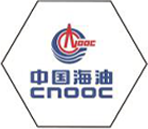
Nov . 19, 2024 19:00
Back to list
pressure reducing regulators
Understanding Pressure Reducing Regulators Essential Components for Safe and Efficient Fluid Control
Pressure reducing regulators (PRRs) are critical components used across various industries to ensure the safe and efficient operation of systems that involve the transport and use of gases and liquids. These devices play a vital role in maintaining a consistent outlet pressure, regardless of fluctuations in the inlet pressure, thereby protecting equipment and processes.
At its core, a pressure reducing regulator works by reducing the pressure of the incoming fluid to a lower, manageable level. This functionality is essential in applications such as gas distribution, chemical processing, and HVAC systems, where excessive pressure can lead to equipment failure, safety hazards, or inefficient operation.
PRRs are designed with several key features. They typically consist of a spring-loaded diaphragm mechanism that responds to changes in outlet pressure. When the pressure on the downstream side of the regulator rises above the set point, the diaphragm moves to close the flow, thereby reducing the pressure. Conversely, when the outlet pressure drops, the diaphragm opens to allow more flow, thereby maintaining the desired pressure. This dynamic operation allows for continuous adjustment and regulation of pressure, providing stability and reliability in fluid systems.
pressure reducing regulators

The selection of an appropriate pressure reducing regulator depends on various factors, including the type of fluid being regulated, the required outlet pressure, flow capacity, and the specific application. There are different designs available, such as single-stage and two-stage regulators. Single-stage regulators are typically simpler and more compact, suitable for applications where the inlet pressure is relatively stable. On the other hand, two-stage regulators provide more precise control and are ideal for applications with significant fluctuations in inlet pressure.
In addition to their basic functionalities, pressure reducing regulators can be equipped with additional features such as pressure gauges, filters, and relief valves, which enhance their performance and safety
. For example, pressure gauges allow operators to monitor pressure levels accurately, while relief valves ensure that the system can vent excess pressure, preventing potential hazards.In summary, pressure reducing regulators are indispensable tools in fluid management. Their ability to maintain consistent pressure levels is crucial for the safety and efficiency of various industrial processes. Understanding the operational principles and selection criteria of PRRs can help engineers and operators make informed decisions, ultimately leading to improved performance and reliability in their systems. As industries continue to evolve, the importance of effective pressure regulation will undoubtedly remain a key focus for safe operations.
Next:
Latest news
-
Safety Valve Spring-Loaded Design Overpressure ProtectionNewsJul.25,2025
-
Precision Voltage Regulator AC5 Accuracy Grade PerformanceNewsJul.25,2025
-
Natural Gas Pressure Regulating Skid Industrial Pipeline ApplicationsNewsJul.25,2025
-
Natural Gas Filter Stainless Steel Mesh Element DesignNewsJul.25,2025
-
Gas Pressure Regulator Valve Direct-Acting Spring-Loaded DesignNewsJul.25,2025
-
Decompression Equipment Multi-Stage Heat Exchange System DesignNewsJul.25,2025

